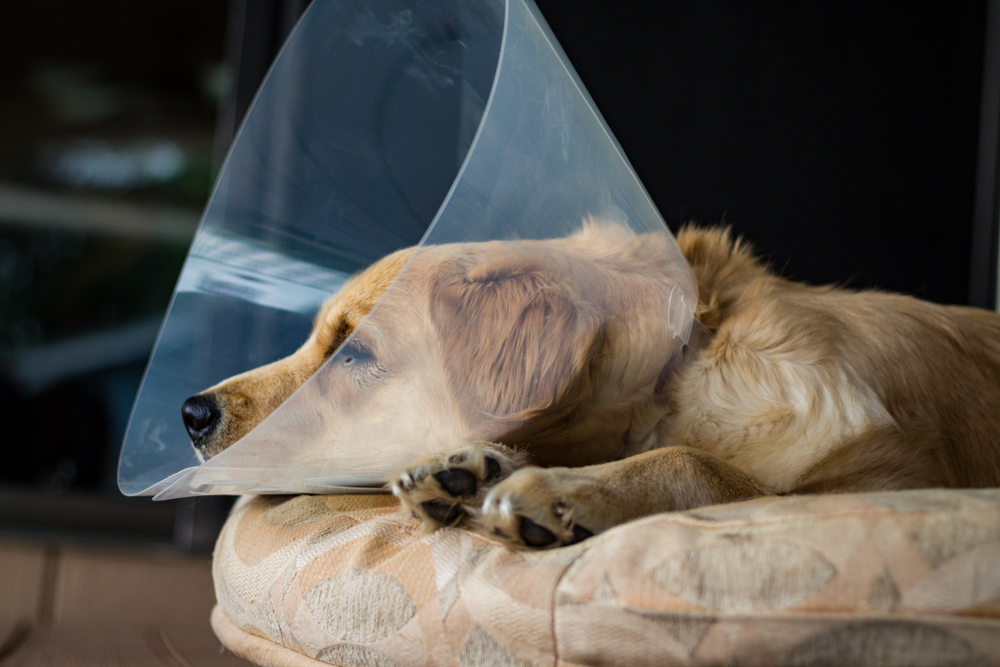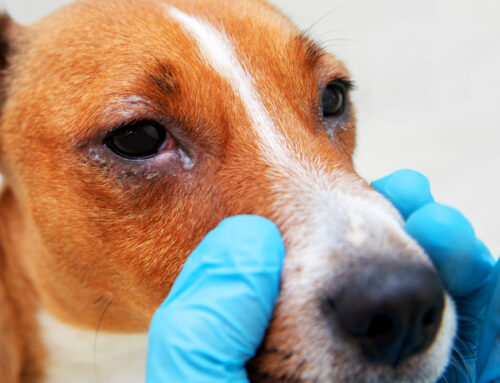The cornea is the clear tissue that covers the eye’s front portion, protecting interior structures from damage and allowing light to enter the eye for vision. Severe corneal damage can lead to complete eye rupture, in which fluid from inside the eye leaks out, inside eye pressure is no longer maintained, structures can move out of place, and blindness can result. The Veterinary Vision Center team can prevent this situation by repairing corneal injuries and treating some corneal diseases with surgery. Here is what you can expect if your furry pal must undergo corneal repair surgery.
Corneal issues in pets
Corneal issues in pets can arise from injury or underlying disease. The most common corneal injury is a corneal ulcer, in which layers of the cornea are scratched or abraded from the surface. If the ulcer becomes infected, the break in the cornea can deepen and become a complete perforation or rupture. Ulcers may occur spontaneously, from an object scratching or puncturing the eye, or because of corneal diseases such as dry eye, keratitis (i.e., corneal inflammation), or corneal degeneration. Ulcers in cats may arise from herpesvirus infections and can lead to a sequestrum (i.e., a chronic dead area in the cornea). In general, corneal issues that require surgery are more common in short-nosed (i.e., brachycephalic) breeds, such as pugs, French bulldogs, and Persian cats.
Some untreated corneal injuries may heal on their own, but deep or complicated ulcers often get worse and can threaten vision or overall eye health. Eye surface infections that eat into the eye’s interior are common reasons for enucleation (i.e., eye removal surgery), so early intervention with medical management is crucial for a successful treatment outcome. In some cases, surgery may be the only option to restore corneal health and preserve vision.
Preparing for your pet’s corneal surgery
If your pet does need surgery for a corneal condition, such as a deep ulcer in a dog or a sequestrum in a cat, we will evaluate your pet’s overall health and discuss the risks and benefits. Although corneal surgeries are highly successful for saving the affected eye, postoperative complications are possible. Therefore, we will run blood tests and check in with your primary veterinarian about your furry pal’s overall health and underlying health issues to ensure their safety while under anesthesia.
Surgery and anesthesia for your pet
Pets must undergo general anesthesia for corneal surgery, because they must remain completely still while the surgeon performs delicate maneuvers on the eye surface. A trained team member will stay with your pet before, during, and after surgery to monitor their vital signs, administer sedatives and pain-relieving medications, and assist the surgeon. We will keep your furry pal for several hours after surgery to ensure their comfort when they wake up.
Corneal repair surgery can take anywhere from a few minutes to an hour, depending on its complexity. The most common corneal surgery is a grafting procedure, in which the surgeon uses various substrates, such as the pet’s own corneal or conjunctival tissue, a donor cornea, or a synthetic material to patch a hole or defect. The veterinary ophthalmologist uses a large, powerful microscope to magnify their view while they secure the graft in place with tiny stitches and suture material.
Corneal surgery recovery and complications

After surgery, your pet will wear an Elizabethan collar (i.e., cone) for several weeks, so that the corneal incision and sutured areas heal without disruption. Eye sutures will dissolve once they have served their purpose, so your pet won’t need additional sedation for removal. Our team will send your pet home with pain medications to help them feel more comfortable during recovery.
The most common complication following corneal surgery is infection, especially if a corneal infection caused the initial problem. Because infection can affect surgical success, oral and topical antibiotics administered on a prescribed schedule are important. For the first few days up to several weeks after surgery, expect to administer multiple eye drops and frequent rechecks at the clinic. You may need to enlist help from neighbors, friends, veterinary team members, or local pet care services to ensure medications are administered on time. Other possible complications include graft rejection and excessive corneal scarring, which could obstruct vision or necessitate a second surgery.
Corneal repair surgery has a high success rate for many pets dealing with serious corneal disease or injury, but success depends on the individual pet’s circumstances and adherence to post-operative medication protocols. For high-risk, brachycephalic breeds, always address eye concerns promptly. Call our Veterinary Vision Center team to schedule a visit and discuss treatment options.







Leave A Comment